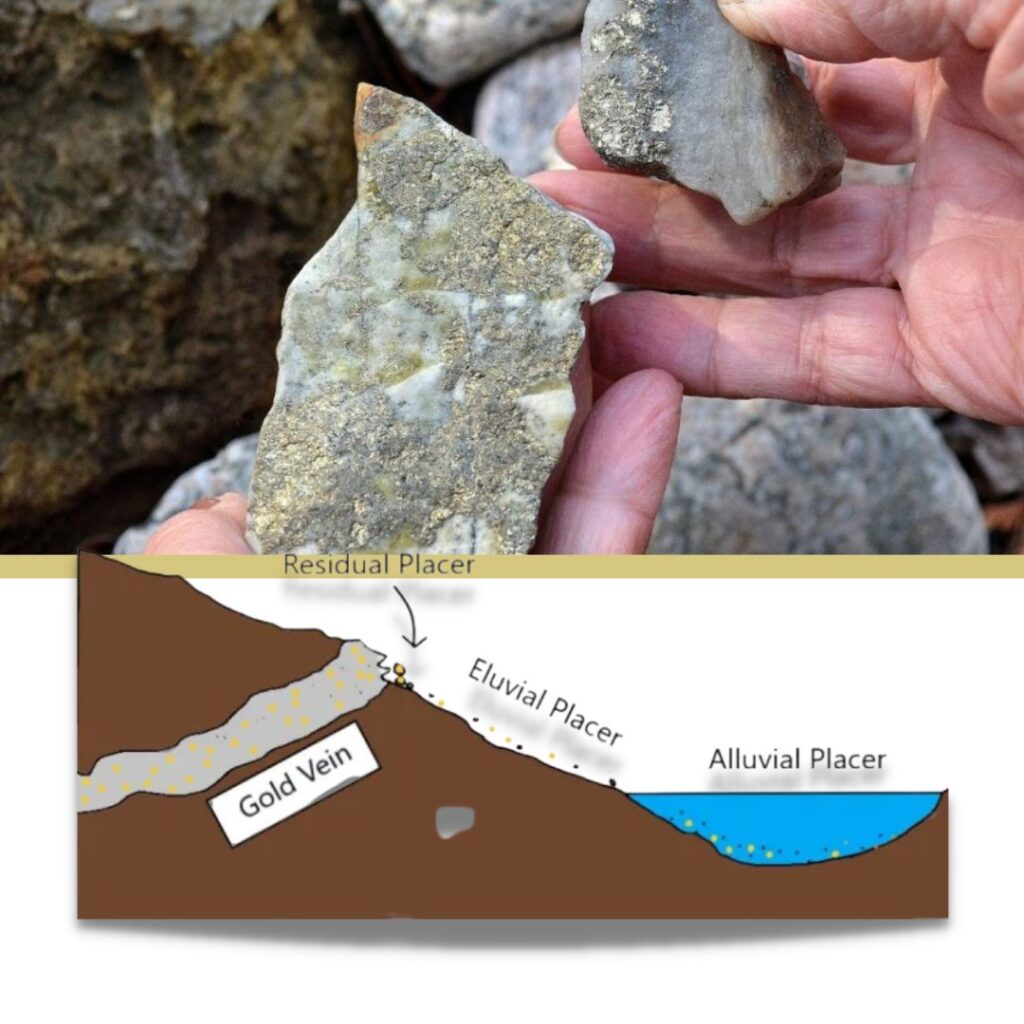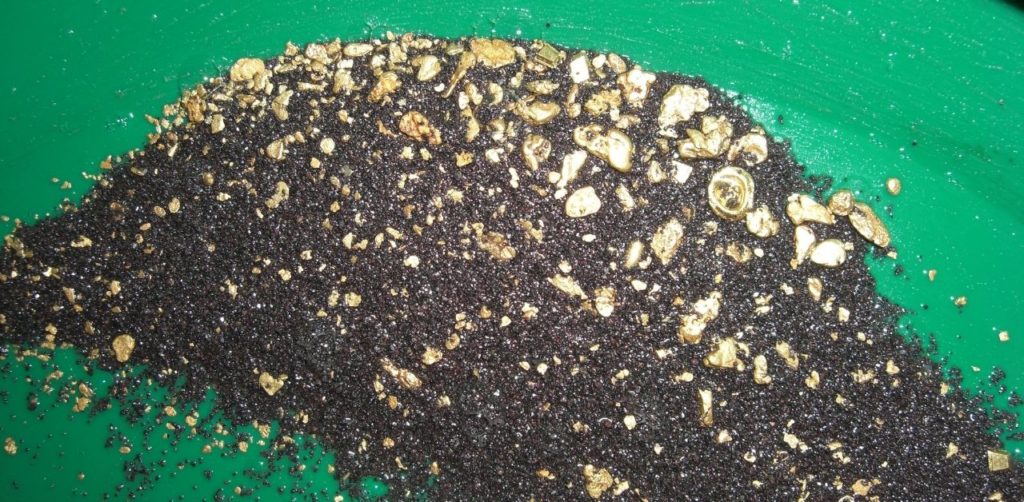Exploring the Gold Deposits

Types of Gold Deposits
Gold deposits can be classified into two main categories: placer deposits and lode deposits.

Placer deposits are formed by the erosion and weathering of rock that contains gold. Over time, the gold particles are washed downstream and collect in riverbeds, stream beds, and other areas where the water slows down. Placer deposits can be found in many locations around the world, including river beds, stream beds, and coastal areas. These deposits are relatively easy to mine, as the gold is found in loose, unconsolidated materials.
Lode deposits, on the other hand, are formed by the precipitation of gold from mineral-rich fluids. These fluids travel through cracks and fissures in the rock, depositing gold along the way. Lode deposits are typically found in hard rock formations, and mining them can be more challenging and expensive than mining placer deposits. Lode deposits are also known as Vein deposits.
In terms of quantity, lode deposits usually contain more gold than placer deposits. However, the gold in lode deposits is also more difficult to extract and requires more advanced mining techniques.
Overall, both types of gold deposits are important sources of gold for mining companies and investors. The location and type of deposit will determine the methods used to extract the gold, as well as the potential profitability of the mining operation.
Gold Deposits around the World: A Regional Overview
Gold deposits can be found in many locations around the world, and the abundance and characteristics of these deposits vary greatly depending on the region.
In North America, some of the most notable gold-producing regions include the United States, Canada, and Mexico. The United States is home to the Carlin Trend in Nevada, which is one of the largest and most productive gold districts in the world. Canada is also a significant gold producer, with notable mines in Ontario and Quebec. Mexico has a rich history of gold mining, with the majority of production coming from the states of Sonora and Chihuahua.
In South America, Brazil and Peru are major gold-producing countries. Brazil has several large gold mines, including the Paracatu mine, which is one of the largest in the world. Peru is home to a number of gold mines, including the Yanacocha mine, which is the largest gold mine in South America and one of the largest in the world.

In Africa, South Africa, Ghana, and Tanzania are significant gold-producing countries. South Africa is home to the Witwatersrand Basin, which is one of the most productive gold districts in the world. Ghana is home to the Ashanti Belt, which is also a major gold-producing region. Tanzania has several large gold mines, including the Bulyanhulu mine and the Geita mine.
In Asia, China, Russia, and Kyrgyzstan are major gold-producing countries. China is the largest gold-producing country in the world and has a number of large gold mines, including the Jinfeng mine and the Lingbao mine. Russia is home to several large gold mines, including the Kupol mine and the Natalka mine. Kyrgyzstan is home to the Kumtor mine, which is one of the largest gold mines in Central Asia.
In Oceania, Australia and New Zealand are significant gold-producing countries. Australia has a number of large gold mines, including the Super Pit mine in Western Australia and the Boddington mine in Western Australia. New Zealand has a rich history of gold mining, with notable mines in the Otago region and the West Coast region.
Overall, gold deposits can be found in many regions around the world and the characteristics and quantity of these deposits vary greatly depending on the region. Each region has its own unique geology, mining history, and mining regulations that affect the mining industry and the exploration of gold deposits.
New Discoveries, Technologies, and Challenges
The future of gold deposits is likely to be shaped by a combination of new discoveries, advancements in technology, and emerging challenges.
One of the key factors that will shape the future of gold deposits is the discovery of new deposits. Exploration companies are constantly searching for new gold deposits, and new discoveries are likely to be made in both known and previously unexplored areas. Advances in technology, such as new exploration techniques and remote sensing, will also make it easier to find new gold deposits.
Advancements in mining technology will also play a crucial role in the future of gold deposits. For example, new technologies such as automation and robotics will make it possible to extract gold from deposits that were previously uneconomical to mine. Additionally, the development of new processing methods and the use of bioleaching, will allow for more efficient and environmentally friendly extraction of gold.
Another important factor that will shape the future of deposits is the increasing focus on sustainability and environmental stewardship. As global demand for gold continues to grow, so too will the need for mining companies to minimize their environmental impact and to operate in a more sustainable manner.
However, challenges also exist, such as the depletion of existing mines, and this will lead to the need for new discoveries and more difficult and deeper mining operations, which could lead to increased costs and risks. Additionally, the increasing regulations and requirements for mining companies to meet environmental and social standards will also add complexity and cost to mining operations.
Overall, the future of gold deposits is likely to be shaped by a dynamic interplay of new discoveries, advancements in technology, and emerging challenges. While some challenges exist, the future of gold mining looks promising, as the demand for gold is expected to continue to grow, driven by both industrial and consumer demand.
